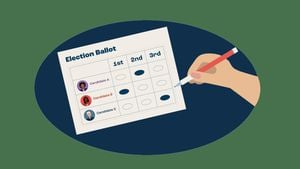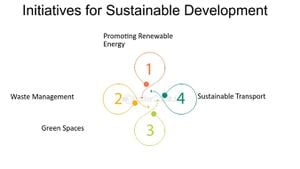If you've ever marveled at the resilience of our bodies in the face of injury, particularly neurological injuries like strokes, you'll find recent research on the signaling mechanisms in the brain incredibly fascinating. A recent study published in Nature Communications examines how different cell types in the brain respond to stroke, particularly focusing on neuroglial cells — the support cells that help maintain brain health. This research comes at a crucial time as stroke remains a leading cause of disability worldwide, and understanding the brain's response can help in developing better treatments.
The study identifies two specific populations of oligodendrocytes — a type of glial cell crucial for the insulation and health of neurons — that behave differently in response to stroke. These findings not only shine a light on the brain's recovery processes but also suggest new avenues for therapeutic interventions. Researchers found that these specific oligodendrocyte precursor cells (OPCs) proliferate and potentially aid recovery following stroke, a progressive brain injury caused by reduced blood flow.
The brain, as one of the most metabolically demanding organs in the body, is particularly vulnerable to ischemia — the deprivation of blood and oxygen commonly experienced during events like strokes. When blood flow to an area of the brain is obstructed, it can set off a cascade of events that culminate in neuronal death and lasting impairment. A stroke survivor experiences life-changing challenges, making the need for effective treatments paramount.
This reaction involves complex molecular signaling pathways among different types of cells in the brain. The intricate network of interactions among astrocytes, oligodendrocytes, and microglia plays a pivotal role in how the brain responds to injury, aiding in recovery or contributing to damage. Previous studies have illuminated some aspects of these mechanisms, yet a comprehensive understanding, particularly at a single-cell resolution, was lacking — until now.
The researchers employed sophisticated techniques like single-nucleus RNA sequencing to unveil the relationships between the various cell types. This methodology allows scientists to examine the specific genetic activity of individual cells in response to stroke, offering insights often obscured in traditional bulk analyses.
In this study, the researchers observed how ischemic strokes precipitate unique changes in the transcriptome — the complete set of RNA transcripts produced by the genome — of neuroglial cells. Following the induced strokes in rodent models, they meticulously analyzed these cellular responses at intervals, specifically focusing on the period following the initial injury when recovery processes are most acutely activated.
The results revealed several striking findings. First, there was a marked increase in specific oligodendrocyte precursor cell populations at the injury sites, particularly in the perilesional area — the surrounding tissue near the infarct. This increase was notably observed at 48 hours post-stroke, indicating a surge in cell division in response to injury. The researchers found that these proliferating OPCs expressed various markers, including CD44, a glycoprotein involved in cell communication. having implications for cellular migration and repair processes in the brain.
This proliferation correlates with the intricate interplay between different neuroglial cell types. The study highlights that reactive astrocytes, another crucial player in post-stroke recovery, interact dynamically with these newly proliferating OPCs. The cells communicate through signaling molecules, notably osteopontin, which enhances the motility of OPCs, drawing them to damaged areas — crucial for neuronal repair. This indicates a complex web of communication at play that might direct the recovery processes.
However, context matters. The study further illuminated differences in cellular responses based on the severity of the stroke. Proliferation patterns and molecular signaling appeared more pronounced in severely damaged areas compared to moderate strokes, shedding light on how injury severity can modulate cellular behavior. This understanding can be pivotal in developing tailored therapeutic strategies that appropriately engage these cellular responses based on the extent of injury.
The implications of these discoveries stretch beyond basic science; they hold promise for clinical applications. By identifying the specific roles of these oligodendrocyte populations and their interactions with astrocytes, researchers might devise therapeutic strategies that enhance the brain's natural reparative processes. This could manifest in improved recovery protocols for stroke patients or innovative treatments that promote brain recovery after injury.
In terms of methodology, the researchers employed advanced computational techniques alongside their RNA sequencing work to analyze the complex data generated at the single-cell level. This approach provides a more nuanced understanding of the signaling mechanisms compared to traditional bulk cell analyses, where critical details can be lost.
Despite these promising insights, the research isn't without its limitations. The study remains primarily in preliminary stages using rodent models — an essential precursor for human application but still distant from clinical validation. Moreover, while they successfully identified distinct cellular responses, precise mechanistic pathways and how they translate to long-term recovery remain areas ripe for further exploration.
Moving forward, investigating how these signaling pathways evolve over time and how they might be modulated with pharmacological interventions will be vital to translating these findings into clinical use. Also of importance will be studies designed to assess the ramifications of age, gender, and genetic background on these neuroglial responses, potentially leading to more personalized medicine approaches for post-stroke rehabilitation.
In summary, the intricate dance of cell signaling in the brain following stroke offers a perspective on recovery that could reshape therapeutic approaches. It opens doors to critical questions about how we might leverage the brain's natural responses to enhance healing and recovery. As the researchers concluded, “The importance of precisely timed cellular responses in the aftermath of a stroke reveals potential therapeutic targets that can be explored for future interventions.”



